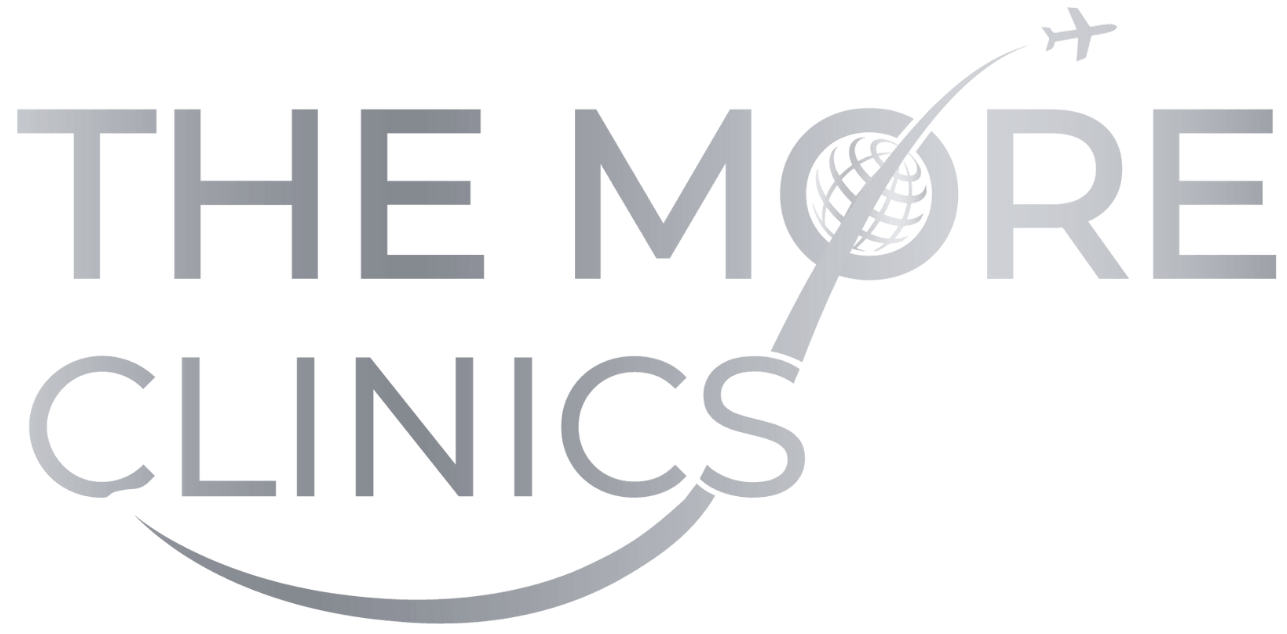Understanding Cancer: Causes, Types, and Treatment
Cancer, also known as malignancy, is characterized by the uncontrolled growth and spread of abnormal cells. It is one of the leading causes of death worldwide, instigating a pressing need for awareness, prevention methods, and advanced treatments.
Receiving a cancer diagnosis can bring about immense stress and fear. However, being aware of what lies ahead, from the initial diagnosis all the way to the journey of recovery, can provide you with a sense of empowerment and enable you to take charge of your own well-being. In this article we will learn the details of cancer, discussing its causes, types, and treatment options.
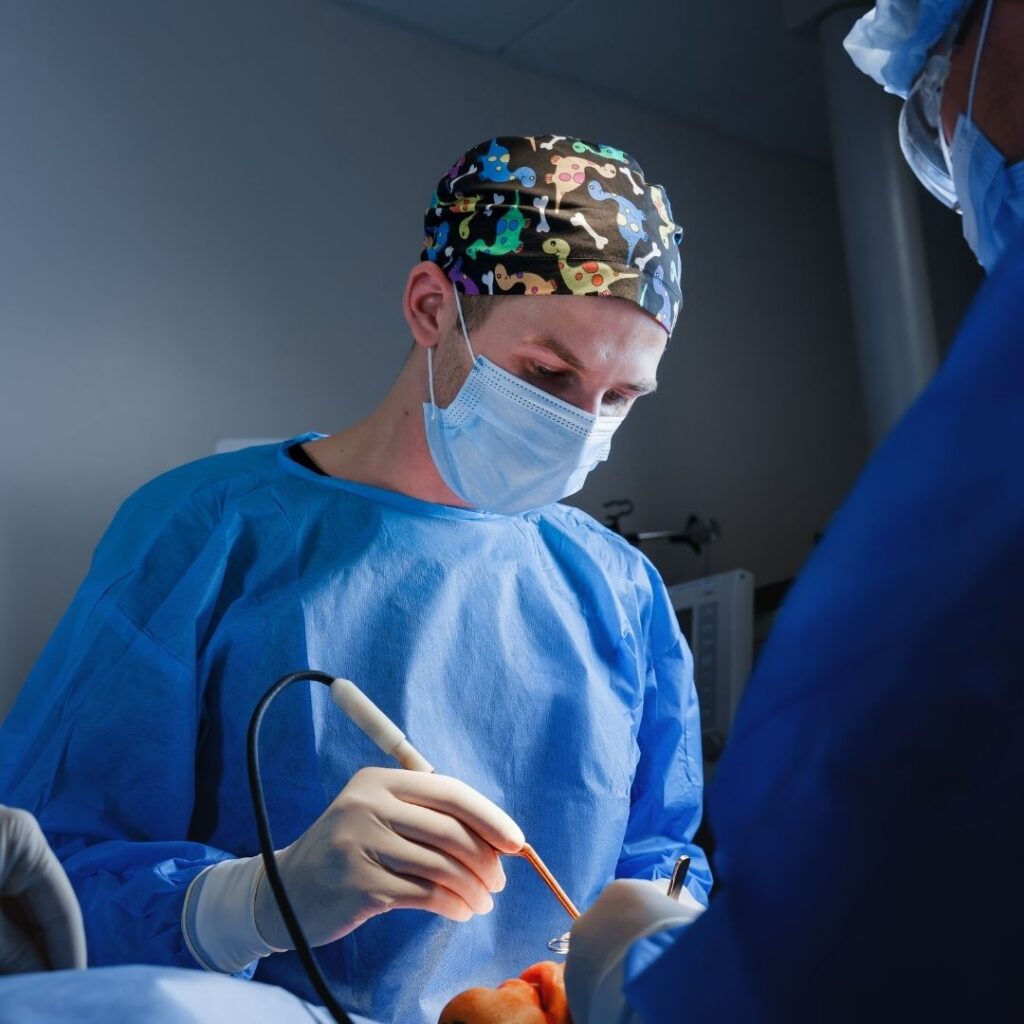
What is Cancer?
In the most basic way cancer can be defined as the uncontrolled growth and spread of abnormal cells in the body. These cancerous cells have the ability to infiltrate and damage surrounding tissues and organs, potentially leading to serious health complications.
Cancer is among the 5 deadliest diseases in the world, with approximately 10 million people losing their lives to it each year. Understanding cancer and its development is crucial in order to prevent and treat it effectively.
Differences between Cancer Cells and Normal Cells
Normal cells have a specific lifespan and are instructed to die after completing their function or becoming damaged. However, cancer cells do not follow this natural process of cell death (apoptosis) and continue to divide uncontrollably, forming masses of abnormal cells called tumors.
Cancerous cells grow rapidly and can spread to other parts of the body through the bloodstream or lymphatic system, causing further harm. This is known as metastasis.
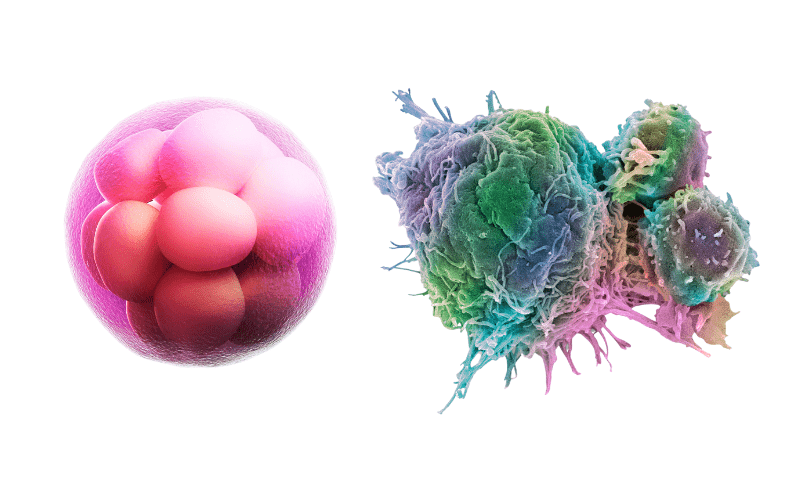
How Does Cancer Start in Your Body?
Cancer can start almost anywhere in the human body, which is made up of trillions of cells. It starts when the genetic changes interfere with the orderly process of cell division in your body.
The cancer development process, known as carcinogenesis, involves the transformation of normal cells into cancerous cells through three stages: initiation, promotion, and progression.
The cancerous cells, which have undergone uncontrolled growth and division, form tumors or cancer clusters. These abnormal growths can propagate and metastasize, spreading through the lymphatic system or bloodstream to other distant parts of the body. This process, known as metastasis, poses a significant challenge in the diagnosis and treatment of cancer.
How Common is Cancer?
Cancer can develop in anyone regardless of age, gender, or ethnicity. It affects people of all ages but is more common in older adults.
According to the World Health Organization, cancer is a leading cause of death worldwide, accounting for 1 in 6 deaths globally.
The most common cancers (listed in descending order according to estimated new cases in 2020) are breast cancer, lung and bronchus cancer, prostate cancer, colon and rectum cancer, melanoma of the skin, bladder cancer, non-Hodgkin lymphoma, kidney and renal pelvis cancer, endometrial cancer, leukemia, pancreatic cancer, thyroid cancer, and liver cancer.
Symptoms and Causes
Cancer symptoms vary widely based on the type and stage of the disease. Some of the first symptoms may include:
- Unexplained weight loss: Losing weight without trying might be one of the early signs of cancer. This is common in cancers such as pancreatic, stomach, lung, or esophageal cancer.
- Fatigue: Although tiredness can be a part of everyday life, extreme fatigue that doesn’t get better with rest can be an early indicator of certain cancers.
- Skin changes: Changes in skin color or sores that do not heal can be signs of skin cancer. Also, some cancers might cause darkening (hyperpigmentation) of the skin.
- Persistent cough or trouble breathing: These symptoms can be associated with lung cancer or cancers of the larynx and throat.
- Changes in bowel habits: Long-term constipation, diarrhea, or a change in the size of the stool may be a sign of colon cancer.
- Unusual bleeding: Coughing up blood can signal lung cancer. Blood in the stool could be a sign of colon or rectal cancer. Women who experience unexplained vaginal bleeding should be checked for cervical or endometrial cancer. Blood in the urine might indicate bladder or kidney cancers.
- Lumps or thickening in certain parts of the body: Many cancers can be felt through the skin, such as breast cancer, testicular cancer, lymphomas, and soft tissue sarcomas.
Causes of Cancer
Cancer is a complex genetic disorder that arises due to mutations in genes responsible for regulating cell activity. Genetic mutations are responsible for approximately up to 12% of all cancer cases.
When an individual has an inherited form of cancer, healthcare providers may recommend that family members undergo the same tests to determine if they also carry the same genetic mutations. This proactive approach allows for early detection and intervention, leading to better outcomes in the fight against cancer.
Other factors that increase the risk of cancer include:
- Tobacco use (the cause of about 22% of cancer deaths.)
- Excessive alcohol consumption
- Exposure to environmental toxins
- Diet high in processed foods and low in fruits and vegetables
- Being overweight or having obesity
- Ultraviolet radiation exposure from the sun or tanning beds
- Certain chronic infections such as hepatitis B, hepatitis C, and human papillomavirus (HPV)
How Is Cancer Diagnosed?
Cancer diagnosis starts with a thorough physical exam and a complete medical history. Further diagnostic tests such as:
Blood tests
Blood tests are often used to screen for cancer or to monitor the effectiveness of treatment. Specific blood tests, also known as tumor markers, can detect certain substances in the blood that may indicate the presence of cancer.
Biopsy
A small sample of tissue is removed from the suspicious area and evaluated under a microscope to check for cancer cells. This is often the most definitive way to diagnose cancer.
Imaging tests
These tests use advanced technology to create images of the inside of the body, allowing doctors to identify tumors and their location. X-rays, CT scans, MRIs, MIGB, PET scans, or ultrasounds can help detect abnormalities in the body that may indicate cancer.
Endoscopy
Endoscopy uses a thin, flexible tube with a light and camera attached to it to examine the inside of certain organs. It can help identify abnormal growths or take tissue samples for further testing.
Genetic Testing
Genetic testing helps determine if an individual carries certain genetic mutations that increase their risk of developing cancer. This knowledge can guide healthcare providers in creating personalized screening and prevention plans.
Early Detection Matters
Early detection is crucial in the fight against cancer, and individuals should pay attention to their bodies and report any unusual symptoms to their healthcare providers promptly. By understanding the common causes and symptoms of cancer and following recommended screenings, we can detect and treat cancer at earlier stages, improving the chances of survival.
Stages of Cancer
The stages of cancer refer to the extent to which cancer has developed or spread within the body. Staging is critical for determining the most effective treatment options and predicting patient prognosis.
The stages are usually labeled from 0 to 4:
- Stage 0: This stage refers to cancer in situ, meaning it has not grown beyond the primary site.
- Stage 1: Cancer is small and localized to one area of the body.
- Stage 2: The tumor has grown but has not yet spread to nearby tissues or organs.
- Stage 3: Cancer has grown further and may have spread to nearby lymph nodes.
- Stage 4: Cancer has spread to other parts of the body, such as distant organs or tissues.
The system commonly used to stage cancer is the TNM system:
- T (Tumor): Refers to the size and extent of the primary tumor.
- N (Nodes): Indicates whether cancer has spread to nearby lymph nodes.
- M (Metastasis): Refers to distant metastasis, meaning cancer has spread to other parts of the body beyond the primary site.
Cancer registries commonly employ another staging system that classifies all types of cancer into five primary categories. This approach facilitates better organization and understanding of cancer groups.
- Unknown—Insufficient information to determine the stage of the cancer.
- In situ—Abnormal cells are present but have not yet invaded nearby tissue.
- Localized—Cancer is confined to its site of origin, showing no evidence of spreading.
- Regional—Cancer has spread to nearby lymph nodes, tissues, or organs.
- Distant—Cancer has metastasized to distant parts of the body.
Cancer Treatments
Cancer treatment depends on the type, stage, and location of the cancer, the patient’s overall health, and personal preferences.
It may include surgery, radiation therapy, chemotherapy, immunotherapy, targeted therapy, hormone therapy, stem cell transplant, and precision medicine.

Chemotherapy
Chemotherapy uses drugs to destroy cancer cells or stop them from growing and dividing. These drugs can be given orally or intravenously, depending on the type of cancer. Chemotherapy is often used in combination with other treatments.
Radiation Therapy
Radiation therapy uses high-energy rays (such as x-rays) or particles (such as protons) to kill cancer cells. It can be used as the main treatment or in combination with surgery, chemotherapy, or targeted therapy.
Cancer Surgery
Surgery involves removing the cancerous tumor and surrounding tissues. The goal is to remove all of the cancer cells while preserving as much healthy tissue as possible.
Bone Marrow Transplant
Bone marrow transplant (also known as stem cell transplant) is a procedure used to replace damaged or diseased bone marrow with healthy blood-forming cells. It can be used to treat certain types of cancer, such as leukemia and lymphoma, or other conditions affecting the bone marrow.
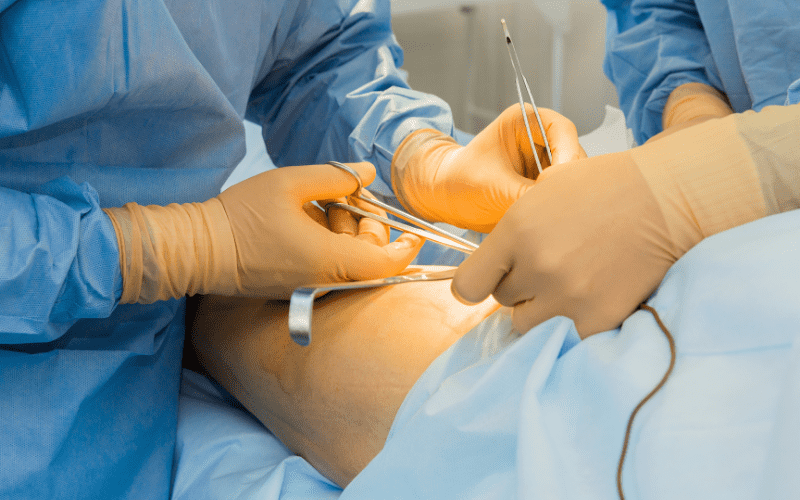
Immunotherapy
Immunotherapy helps boost the body’s natural defenses to fight cancer by using substances made by the body or in a lab to improve, target, or restore immune system function.
Targeted Therapy
Targeted therapy attacks specific abnormalities within cancer cells. These targeted drugs can block the growth and spread of cancer cells while causing less harm to healthy cells.
Hormone Therapy
Hormone therapy is used to treat cancers that grow in response to certain hormones, such as breast and prostate cancer. It can block or lower the production of certain hormones or prevent them from working.
Precision Medicine
Precision medicine involves using a person’s genetic information to guide their cancer treatment. This approach aims to provide more effective and personalized treatments by targeting specific genetic mutations that drive cancer growth.
Complementary and Alternative Medicine (CAM)
Some individuals may choose to use CAM in addition to conventional cancer treatments. These practices include acupuncture, massage therapy, herbal supplements, and more. It’s essential to discuss any potential CAM therapies with your healthcare provider before incorporating them into your treatment plan.
How to Live with Cancer?
Living with cancer can be a profoundly challenging experience that requires comprehensive care for your physical, emotional, and social wellbeing. This includes effectively managing symptoms and side effects, such as pain and fatigue, through appropriate medications and therapies. Additionally, maintaining a balanced diet that supports optimal nutrition can help boost your body’s resilience and overall health.
Engaging in regular physical activity, tailored to your abilities, can contribute to improved energy levels and overall quality of life.Finally, seeking mental health support and guidance from professionals who specialize in cancer care can provide invaluable emotional support and coping strategies throughout your journey.
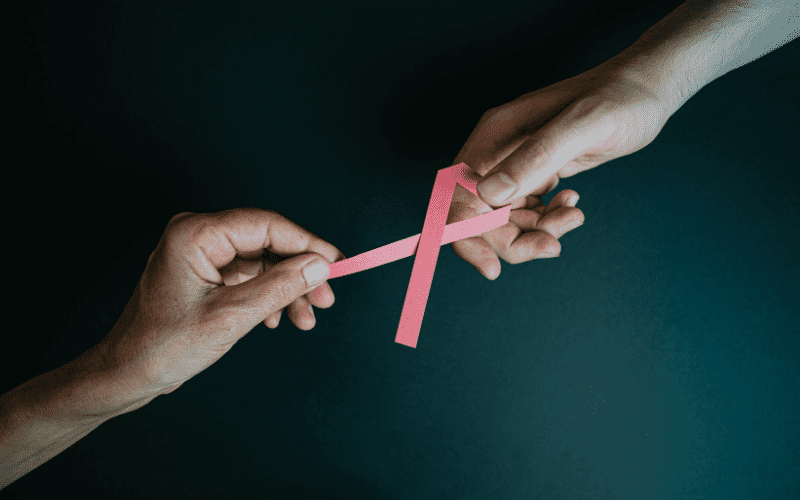
Can You Prevent Cancer?
While it’s not possible to completely prevent cancer, you can reduce your risk by maintaining a healthy lifestyle, getting vaccinated, regular screening, and early detection.
Early detection plays a pivotal role in the effective management of cancer. The sooner cancer is diagnosed, the more likely it is that the treatment will be successful. Early diagnosis often results in a wider array of available treatment options, including those less invasive and with fewer side effects.
Regular health check-ups, self-examinations, and screening tests can assist in catching cancer in its initial stages when it’s most treatable.
Last Words from More Clinics
Learning you have cancer might make you feel frightened and overwhelmed. Many people feel as if they’ve lost control of their lives. Your healthcare providers understand all of those feelings. They know a cancer diagnosis is a life-changing event.
We encourage you to stay informed, stay proactive, and reach out for support when needed. Remember, you are not alone in this fight against cancer. Together, we can strive towards a world without cancer. Stay strong and never lose hope.
As the More Clinics, we’re committed to providing comprehensive care, from prevention to treatment, and survivorship. We believe in empowering our patients with the knowledge and resources they need to make informed decisions about their health.
